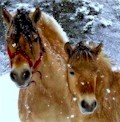In the past, horse owners trained their horses with force and brutal punishments. But these days, horse training groundwork is practiced. This new training method has paved the way for trainers to have better relationships with their horses. It basically focuses on the usage of various groundwork programs and sending exercises to have good boundaries and communications with horses. This training method is also about the trainer’s ability to work with his horse while recognizing its basic instincts and mentality. He must use the systems which have been developed from the studies on wild horses and their ways of communicating with one another.
Then, when practicing the horse training groundwork methods, the trainer must use the basic techniques. He has to master them in order to achieve the positive results that he wants. These techniques involve communication and training timing which are very important. Horses learn conversely from the ways that people learn. They also learn through reinforcement. However, positive reinforcements must be given to them whenever they perform a task correctly. And whenever a negative reinforcement needs to be given, it should be firm but gentle. So, for instance, if the trainer wants his horse to go left, he has to put his hand firmly on the right shoulder of the horse. He has to apply enough pressure, so his horse will move.
And once it has finally moved to the left, the trainer has to stop applying the pressure. This will then lead the horse into realizing that whenever it complies with its trainer, the trainer will stop applying a negative force. The pressure or the negative force must never be used as punishment, though; hence, it should only be used as a measure for natural horse training. Moreover, the trainer must reward his horse for its good performances.
